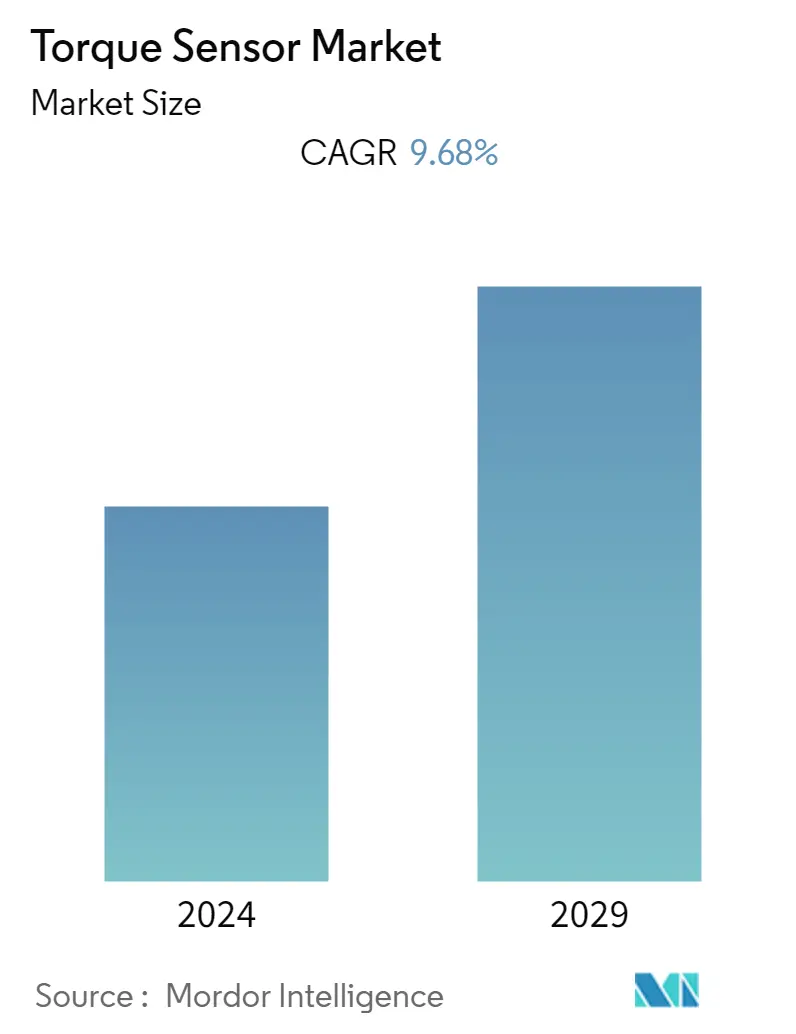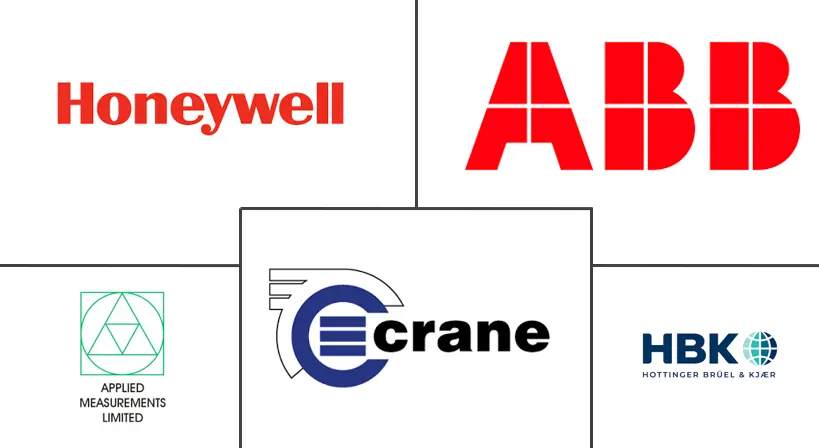Market Size of Torque Sensor Industry

| Study Period | 2019 - 2029 |
| Base Year For Estimation | 2023 |
| CAGR | 9.68 % |
| Fastest Growing Market | Asia-Pacific |
| Largest Market | Asia-Pacific |
| Market Concentration | Low |
Major Players
*Disclaimer: Major Players sorted in no particular order |
Need a report that reflects how COVID-19 has impacted this market and its growth?
Torque Sensor Market Analysis
The torque sensor market was valued at USD 6.73 billion in 2020, and it is expected to reach USD 11.63 billion by 2026, registering a CAGR of 9.68% during the period 2021-2026. Due to the COVID-19 pandemic, the global supply chain and demand for multiple products have majorly been disrupted. The need for multiple products in various end-user industries has experienced disruption, which negatively impacted torque sensor demand and future adoption in various applications. Moreover, due to production shutdowns in countries such as China, multiple industries observed a shortage of various products during February and March 2020. Due to supply chain disruptions, the raw material prices increased, impacting the overall pricing of the sensor and related systems.
- Torque sensors measure torque through various methods. The basic principle is a mechanical process, which measures the "force" being used (or attempting) to turn an element. Also, when a force of "torque" is applied to a shaft, the shaft twists (by a minimal amount).
- Further, improvements in technology and integration of wireless and digital components into torque sensors are expected to help sustain the market's growth. Moreover, Industry 4.0, industrial automation, robotics, and smart factory concepts are increasing the market opportunities for torque sensors. The upward trend in the aerospace, automotive, and medical sectors is driving demand in the market.
- Moreover, with demand increasing for improving safety, control, and pilot operations, various aerospace companies are expected to adopt torque sensors because these sensors measure in-flight torque controls, actuation systems, and braking systems. Also, to remain competitive in the market, torque sensor vendors are coming up with new products suitable for specific applications.
- Market vendors are integrating new technologies to launch new products in the market. Most torque sensors need slip rings to transfer torque readings from the rotating shaft to the static readout. Generally, this system is noisy to use, slow to set up, and wearing parts are not always reliable. Some companies have integrated wireless technologies with surface acoustic wave (SAW) detection to overcome these challenges.
- For instance, in December 2020, UK sensor manufacturer, Sensor Technology, announced a new generation of non-contact torque sensors based on four-element strain gauge bridges that complement its existing non-contact sensors, which use surface acoustic waves (SAW) detection, but offer improved accuracy for the same price.
- One of the significant challenges the market faces is the challenge posed by the technology due to the diversity of applications of torque sensors. Due to diverse applications in different environments, the accuracy and reliability of these sensors get compromised. Moreover, electric vehicle drives run at significantly higher rotational speeds, creating challenges for torque sensors.
- Furthermore, surgeons demand devices in the medical industry to allow precise control and repeatable movement, usually in a compact footprint. Torque sensors coupled with advanced electronics can help provide such capabilities. These sensor developers encounter engineering challenges integrating them into the devices, particularly for surgical robotics. For instance, measuring the torque moment is critical to ensure that robotic tools can perform precise and seamless movements, but incorporating sensors into these complex medical systems creates challenges for the developers.
